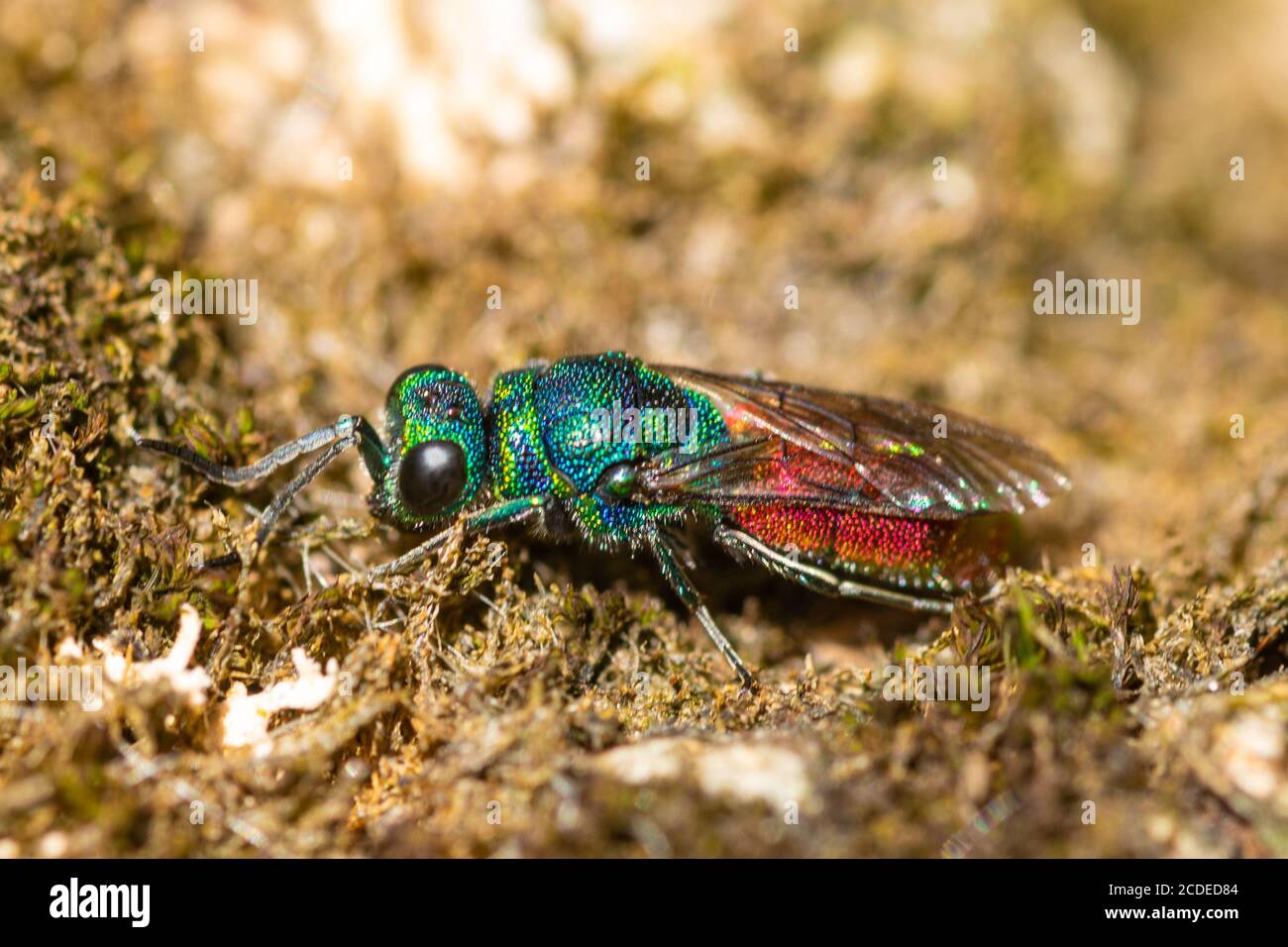The glittering metallic ruby tailed wasp is one of many species of solitary bee and wasp that can be spotted in a number of habitats from walls to sandy quarries rocky outcrops to tree trunks.
Ruby tailed wasp species uk.
Their beautiful colours mask the intentions of this assassin.
Ruby tailed wasps are often called cuckoo wasps because they lay their eggs in the nests of other insects usually other wasp and bee species.
Ruby tailed wasps have a very hard body cuticle that protects them from the stings of the host species if they are discovered in the act of laying their eggs in the host s nest.
It is likely to be a chrysidid cuckoo wasp a family of parasitoid and cleptoparasitic wasps.
That flash of iridescent metallic blue green you observed near your solitary bee nest box was probably a wasp.
Chrysura hirsuta and chrysis fulgida.
A typical hymenopteran has 2 pairs of wings though they are coupled together with tiny hooks so appear as 1 pair.
However chrysis ignita is one of a number of very similar ruby tailed wasp species which are extremely hard to tell apart.
Each wasp species has its own characteristic body markings which you can spot only up close.
The head and thorax are a dazzling greenish blue and the abdomen is a firey red.
The abdomen is a deep ruby red if seen close up this is perhaps one of the most beautiful british insects.
Chrysis ignita parasitize mason bees in particular.
Beautiful ruby tailed or jewel wasps.
The head and thorax of the ruby tailed wasp is a shiny blue green colour.
Chrysididae ruby tailed wasps.
Instead the female builds a nest by herself stocks it with pollen and lays an egg.
Bees wasps and ants are all part of an insect order called hymenoptera.
It is a huge group with many species and a diverse range of forms.
Chrysis ignita is the species of the ruby tailed wasps that can be found across the uk from april through to september.
These wasps have a number of adaptions which have evolved to equip them for their life cycle.
You can often see them running restlessly over walls and tree trunks constantly using their downward curving antennae to pick up the scent of their host insect.
There are several species of ruby tailed wasps in the uk and ignita above is the one most frequently seen.
The name hymenoptera means membrane wings.
Solitary bees and wasps do not live in colonies like honey bees.
You can distinguish a wasp by its striking black and yellow stripes and slightly more elongated bodies.
Being barely 10mm in length they can be difficult to spot.
In bright sunlight the vivid metallic colours of their bodies appear very jewel like.




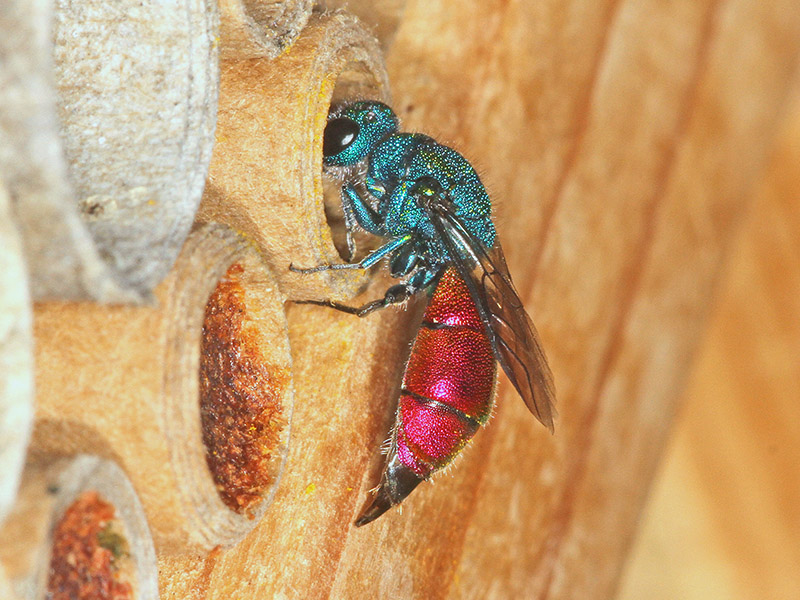
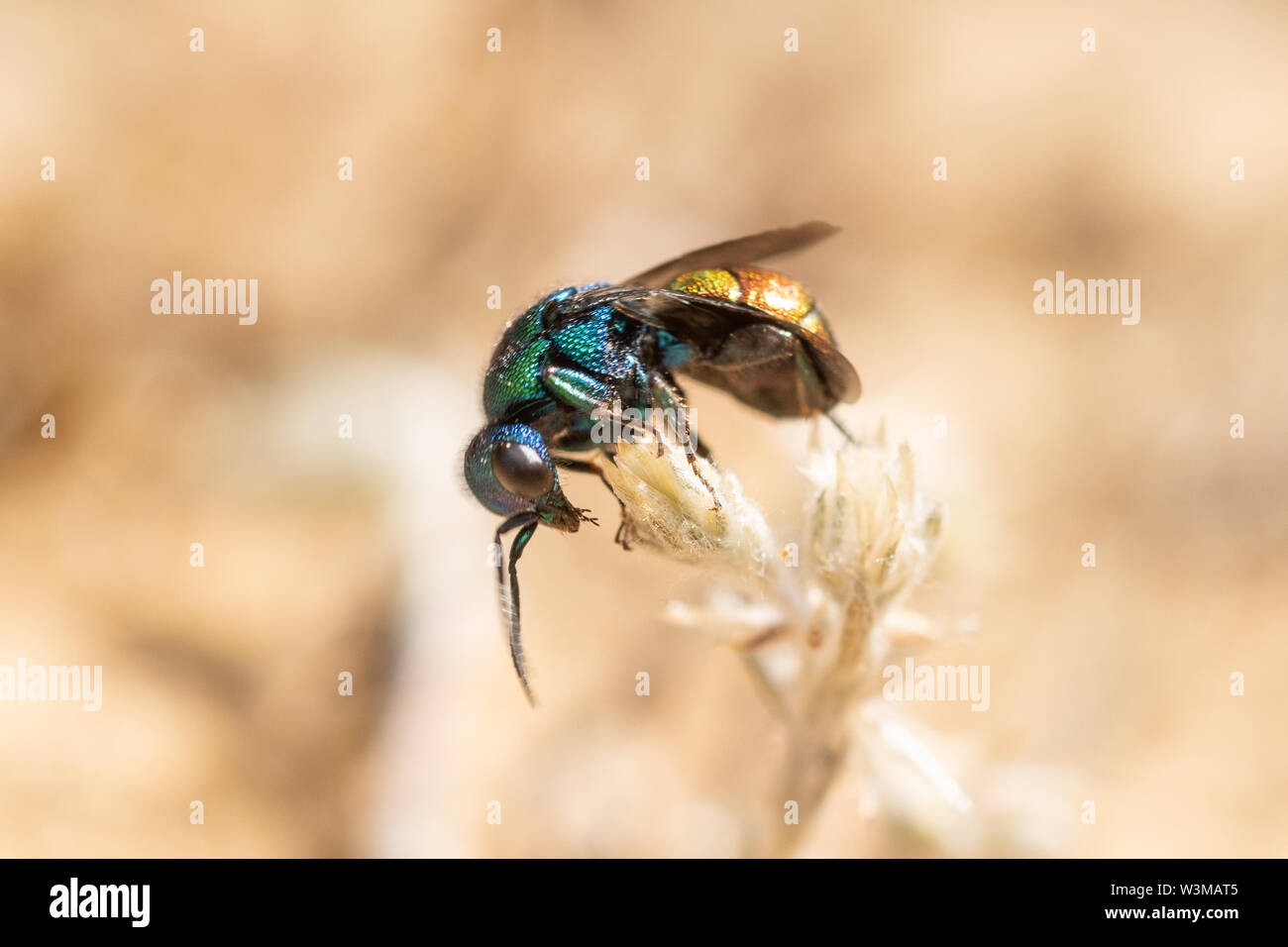

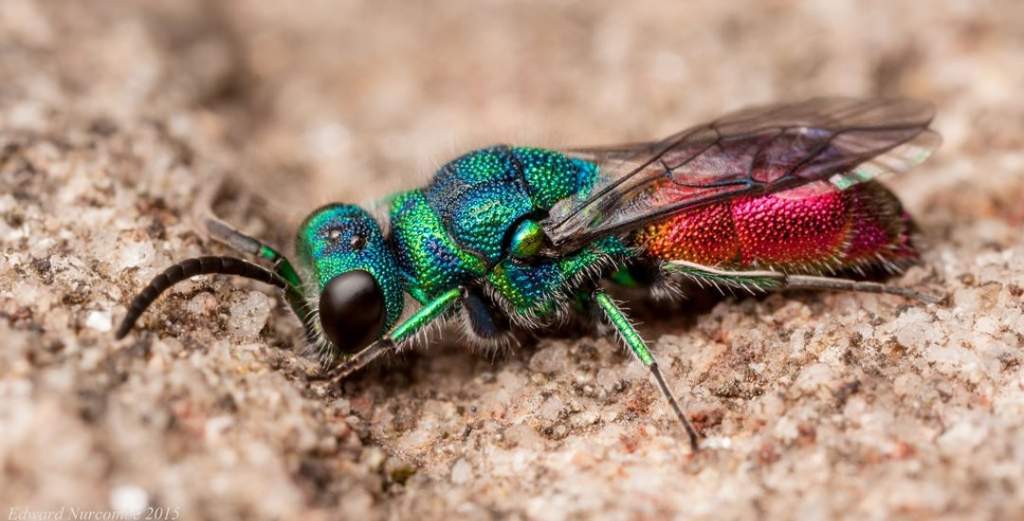
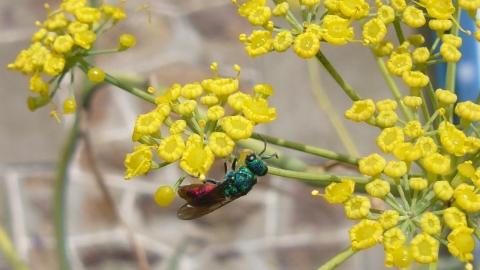


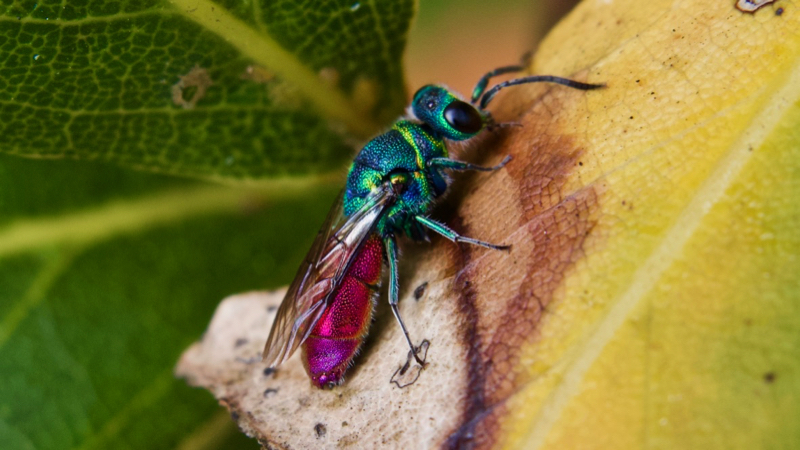




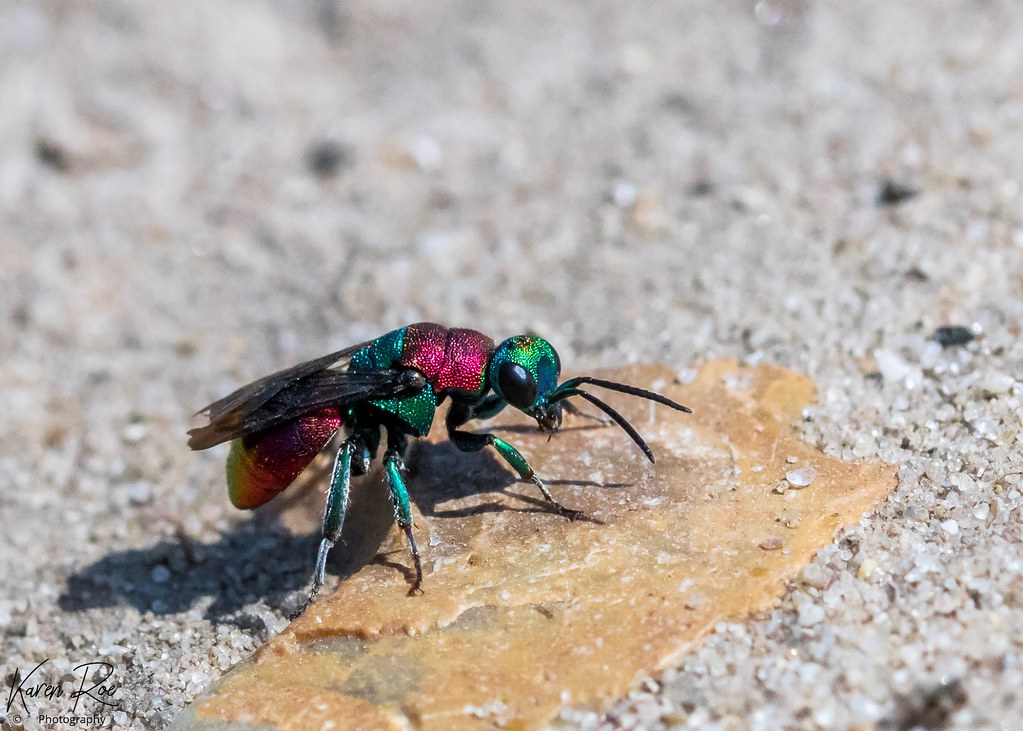


.jpg)



